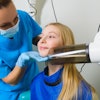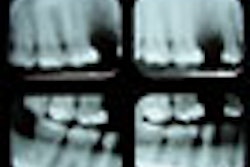
The U.S. Food and Drug Administration (FDA) today issued a draft guidance to encourage manufacturers of x-ray imaging devices to consider the safety of children in the design of new equipment.
The draft guidance recommends manufacturers design new x-ray imaging devices with protocols and instructions that specifically address their use on pediatric patients.
It also proposes that manufacturers who do not adequately demonstrate that their new x-ray imaging devices are safe and effective in pediatric patients should include a label on their device that cautions against use in pediatric populations.
To help healthcare providers more safely use their current equipment on pediatric patients, the FDA is collaborating with the Alliance for Radiation Safety in Pediatric Imaging (ARSPI) and manufacturers, through the Medical Imaging and Technology Alliance (MITA), to develop pediatric imaging radiation safety training materials.
FDA background documents on the new program note that most x-ray imaging devices are marketed with general indications-for-use statements that don't address the unique issues associated with pediatric use, or contain any specific labeling for pediatric patients. But the use of ionizing radiation in children is of specific concern, it says, for three reasons:
- Younger patients are more sensitive to radiation than adults.
- Younger patients have longer expected lifetimes for the effects of radiation to manifest into cancer.
- The use of equipment and exposure settings designed for adults can result in excessive radiation doses in children.
"Experts have commented that many radiological devices are sold without the design features or labeling information that would help users optimize benefit (clinically usable images) in comparison to risk (radiation exposure) for pediatric imaging," the FDA wrote.
The FDA has also launched a pediatric x-ray imaging website that provides information on the benefits and risks of imaging using ionizing radiation, recommendations for parents and health care providers to help reduce unnecessary radiation exposure, and information for manufacturers of x-ray imaging devices.
The guidance, website, and ongoing collaborations with ARSPI and MITA are part of FDA's Initiative to Reduce Unnecessary Radiation Exposure from Medical Imaging, launched in February 2010.
Allan Farman, BDS, MBA, PhD, DSc, a professor of radiology and imaging science at the University of Louisville in Kentucky and immediate past-president of the American Association for Oral and Maxillofacial Radiology, applauded the FDA's efforts.
"As a proponent of the Image Gently Alliance, I welcome the new FDA initiative to protect children against unnecessary radiation exposure," he told DrBicuspid.com. "The FDA has achieved a nice balance in explaining the benefits of use of ionizing radiation in diagnosis where this is clinically necessary based upon professional judgment versus the risks involved."
The use of ionizing radiation should be limited to the minimum necessary for the diagnostic objective of the examination, and for the pediatric population when use of radiation is judged necessary it should be "child-sized," Dr. Farman added.
A workshop scheduled for July 16, 2012, will bring together industry, x-ray imaging equipment users, and patient advocates to discuss the draft guidance. The FDA is also seeking public comment.



















